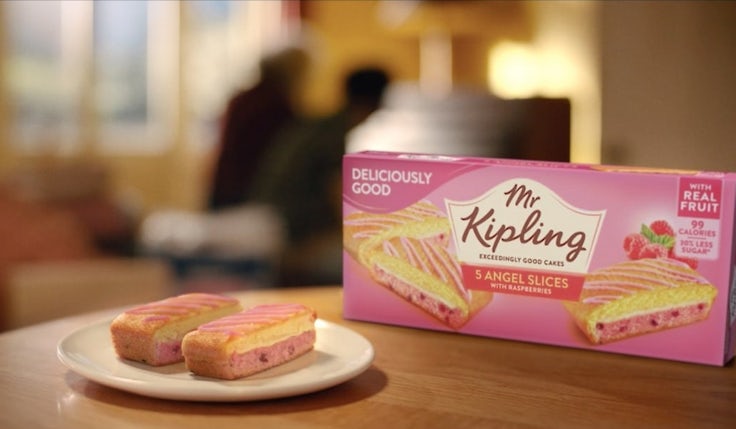How to write an award-winning case study – even if it’s not an award you want
Whether you’re entering industry awards or reviewing your work internally, the best case studies focus on the things that matter to the judges and your business.
 It’s the beginning of awards season, with agencies and brand teams polishing their entries, and judges poring over submissions ahead of final decisions and the announcement of winners in the summer and autumn.
It’s the beginning of awards season, with agencies and brand teams polishing their entries, and judges poring over submissions ahead of final decisions and the announcement of winners in the summer and autumn.
It is a real privilege to be invited to judge. It’s a great way to immerse myself in how other brands and categories deal with the challenges they face to grow, the creative solutions they develop, and how they demonstrate the value of marketing and brand building. This year I am delighted to be on the panel for the Marketing Society, the IPA Effectiveness Awards and, of course, the Marketing Week Awards, which celebrate the best work across the UK in the past year and are currently open to entries.
There are loads of reasons to be grateful that these and other bodies invest the considerable time it takes to organise awards, not least of which is to celebrate and recognise the best work. Awards are about sharing best practice and new learning, but also inspiring other brands and, perhaps most importantly, creating conviction in the practice of brand building. Conversations between judges help flush out big cross-industry themes and calibrate our common understanding of what reputation we want to establish for marketing.
As I engross myself once again in case studies, I am struck that it is agencies who consistently write the best submissions. It’s telling, not just because of the emphasis they naturally place on how a message is communicated, but the recognition of the commercial value of storytelling for their business in marketing themselves to prospective brands. Honing our storytelling skills is an important area for us to develop further in our teams.
Like all great stories, you should be able to play it back simply – in no more than a couple of sentences, but with the same intensity of impact.
Without promising a sure-fire way to pick up an award, I am also struck by key themes in those submissions which rise to the top; or, if you wish to be less generous, whose absence holds back the other entrants. Most importantly, these strengths or deficiencies correlate with common areas we also need to improve across our industry: our understanding of how marketing works in practice, and how to explain and champion our work effectively within our own organisations – ideally with objectivity and unambiguous links to business growth.
Even if there is not an award at stake, it’s worth writing and sharing what you learned in the last year and what it means going forward. This discipline helps us stand back and make sense of what we do day to day and how to make it better. In any case, here’s how I advise going about it.
Firstly, pick the right category
It takes time and effort to put together a submission, so it can be tempting to enter it in multiple categories and often different awards. This is fine, but experience shows most entries excel in exemplifying one category the best – be it insight, communications, innovation, etc. At least, if reapplying a case study, refine it to fit the category or judging criteria of the different awards. Though you can adapt a case study for a different audience or to emphasise a different key message, it is about being clear that most stories have a dominant and powerful message, which will be the most valuable learning to you and other brands.
Dramatically capture the context and challenge your brand faced
Nothing will engage your audience more than this – bring jeopardy, opportunity and reward to the fore as you explain the forces shaping the destiny of your brand, your business, and your consumers. It will also serve as the exciting introduction to an inspiring and energising story, the ‘hero’s journey’ with your brand as protagonist.
Set out measurable KPIs – stretching but achievable
How else will the judge or your audience know what success looks like and whether you delivered everything you aspired to? It’s amazing how often in awards submissions or internal reviews this is vague or, worse still, absent. For your reader or audience this is deeply unnerving.
Think about your consumer or shopper as another key protagonist
Paint out vividly the insight into their motivations, attitudes or behaviours your brand was able to tap into. Pulling through a red thread of insight from the challenge through to the creative solution that delivers results is the stuff of magic. It is often refined retrospectively, which will help guide the next chapter of your brand’s work.
Plan a big finale
This should be the outcomes the work delivered, stacked up against the KPIs and based on evidence. Though critical for certain awards, it’s good to leave your reader certain it was the marketing which delivered the results – deal with other factors and explain things such as changes in competitor performance, which may stick out and foster doubt.
Let your story speak for itself
Some award submissions try it on with ‘social proof’ brags about other awards the work has won, in an attempt to influence. This can be counter-productive –maybe the judge will simply assume they have different standards, or the mix of entries is different. Just as in an internal review of your work, objectivity wins over sales tactics.
And finally, like all great stories, you should be able to play it back simply – in no more than a couple of sentences, but with the same intensity of impact. To make this straightforward be clear on what you discovered, developed and delivered.







Comments